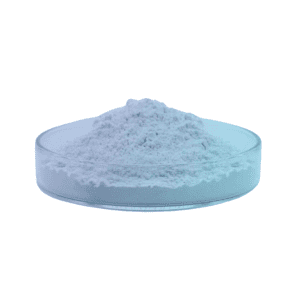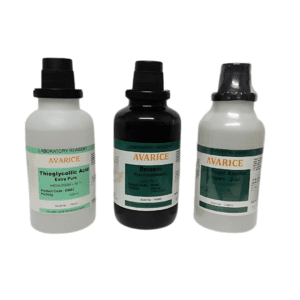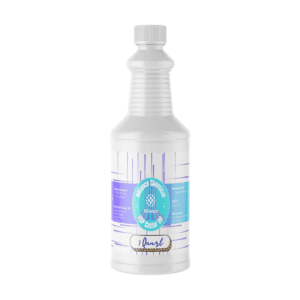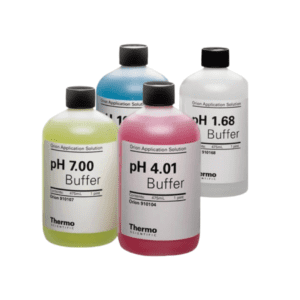Reagents
Description
Reagents: Essential Chemicals for Laboratory Reactions and Analysis
Reagents are chemicals or compounds that are used to initiate, facilitate, or participate in chemical reactions. They are vital in a wide range of laboratory, industrial, and pharmaceutical applications. Whether for synthesizing new compounds, testing samples, or diagnosing diseases, reagents play a crucial role in ensuring the accuracy, reliability, and reproducibility of chemical and biochemical experiments. In both research and industrial settings, the correct use of reagents can significantly influence the outcome and success of processes, making them indispensable in a variety of disciplines.
Reagents come in various forms, including solids, liquids, and gases, and are typically manufactured to a high degree of purity to meet the stringent requirements of scientific experiments and industrial applications. They are categorized based on their role in the reaction, and their composition is often tailored to suit specific applications, such as enzyme assays, titrations, diagnostics, or chemical synthesis.
Applications of Reagents:
- Chemical Synthesis: Reagents are used to produce new chemicals, including pharmaceuticals, polymers, and industrial chemicals.
- Diagnostics: In clinical and research laboratories, reagents are used in diagnostic tests to detect disease markers, pathogens, or other important biological indicators.
- Environmental Testing: Reagents are used for water, soil, and air testing to detect contaminants or measure chemical concentrations.
- Food and Beverage Testing: Reagents help ensure that food products meet regulatory standards for safety, quality, and consistency.
- Biotechnology and Pharmaceuticals: Reagents are essential in DNA analysis, protein assays, enzyme reactions, and drug development.
Comprehensive List of Products in the Reagents Category:
1. Acids (e.g., Hydrochloric Acid, Sulfuric Acid):
- Applications: Used in titrations, pH adjustments, and as catalysts in chemical reactions.
- Industries: Chemical analysis, pharmaceuticals, education.
- Features: Available in various concentrations and purity levels for laboratory and industrial use.
2. Bases (e.g., Sodium Hydroxide, Potassium Hydroxide):
- Applications: Used to neutralize acids, adjust pH, and facilitate saponification or other chemical processes.
- Industries: Analytical chemistry, manufacturing, food processing.
- Features: High purity for precise measurements and reactions.
3. Oxidizing Agents (e.g., Potassium Permanganate, Hydrogen Peroxide):
- Applications: Used in redox reactions, disinfection, and chemical synthesis.
- Industries: Biotech, environmental testing, healthcare.
- Features: Available in solid or liquid forms for different oxidation processes.
4. Reducing Agents (e.g., Sodium Borohydride, Lithium Aluminum Hydride):
- Applications: Used in reduction reactions to donate electrons and reduce other compounds.
- Industries: Organic chemistry, pharmaceuticals, biotechnology.
- Features: High purity and precision for controlled reactions.
5. Indicators (e.g., Phenolphthalein, Bromothymol Blue):
- Applications: Used in titrations and pH measurement to indicate changes in pH through color change.
- Industries: Education, environmental science, analytical chemistry.
- Features: Various indicators with different pH ranges for specific reactions.
6. Enzymes (e.g., Amylase, Protease):
- Applications: Used in biochemical assays, digestion studies, and in the food industry for breaking down complex molecules.
- Industries: Biotechnology, pharmaceuticals, food and beverage.
- Features: Prepared and stabilized to ensure enzymatic activity during reactions.
7. Solvents (e.g., Acetone, Ethanol, Methanol):
- Applications: Used to dissolve other reagents, extract compounds, and clean laboratory equipment.
- Industries: Chemical analysis, pharmaceuticals, biotech research.
- Features: Available in high-purity grades for various laboratory processes.
8. Salts (e.g., Sodium Chloride, Potassium Nitrate):
- Applications: Used to prepare buffers, control ionic strength, and as catalysts in reactions.
- Industries: Agriculture, environmental testing, healthcare.
- Features: Available in reagent-grade purity for laboratory use.
9. Buffer Solutions (e.g., Phosphate Buffered Saline, Tris Buffer):
- Applications: Used to maintain a stable pH in biological and chemical experiments.
- Industries: Biotech, pharmaceuticals, molecular biology.
- Features: Pre-made and ready-to-use for precise pH control.
10. Reagent Kits (e.g., Protein Assay Kits, Glucose Test Kits):
- Applications: Complete kits with all necessary reagents for specific assays, including enzyme assays, colorimetric tests, and diagnostic tests.
- Industries: Healthcare, biotechnology, pharmaceuticals.
- Features: Easy-to-use, pre-packaged kits for laboratory and field diagnostics.
11. Centrifuge Tubes and Reagents (e.g., Ethanol for Precipitation, Acetone for Washing):
- Applications: Used in combination with centrifugation processes for the isolation of cells, proteins, and nucleic acids.
- Industries: Molecular biology, research labs, biotechnology.
- Features: Compatible with standard laboratory centrifuge equipment for sample preparation.
12. Chelating Agents (e.g., EDTA, Citric Acid):
- Applications: Used to bind metal ions and prevent interference in biochemical assays or reactions.
- Industries: Biotech, pharmaceuticals, chemical research.
- Features: High purity to ensure effective metal ion binding in sensitive reactions.
13. Titration Reagents (e.g., Potassium Dichromate, Sodium Thiosulfate):
- Applications: Used for determining the concentration of a solution through titration.
- Industries: Analytical chemistry, food and beverage testing, pharmaceuticals.
- Features: Prepared in precise concentrations for accurate titration results.
14. Tissue Staining Reagents (e.g., Hematoxylin, Eosin):
- Applications: Used in histology and microscopy to stain tissue samples for examination.
- Industries: Medical research, pharmaceuticals, histology.
- Features: Ready-to-use formulations for consistent staining results.
15. Antibodies and Antigen Reagents (e.g., Rabbit Anti-Human IgG, Mouse Monoclonal Antibody):
- Applications: Used in immunoassays, including ELISA, Western blotting, and immunohistochemistry.
- Industries: Immunology, pharmaceuticals, diagnostics.
- Features: High specificity and affinity for target antigens.
16. Metal Reagents (e.g., Copper Sulfate, Iron Chloride):
- Applications: Used in environmental testing, chemical synthesis, and as catalysts in reactions.
- Industries: Environmental science, chemistry, industrial applications.
- Features: Available in a range of concentrations for industrial and laboratory use.
17. Laboratory Reagents for PCR (e.g., Taq Polymerase, dNTP Mix):
- Applications: Used in PCR amplification for DNA analysis and genetic research.
- Industries: Molecular biology, genetics, biotechnology.
- Features: Pre-prepared and ready-to-use for efficient PCR reactions.
Conclusion:
Reagents are integral to laboratory processes, ensuring that chemical reactions, diagnostics, and experimental procedures proceed with accuracy and consistency. By choosing the correct reagents, scientists, researchers, and industry professionals can enhance the reliability of their results, whether in pharmaceutical manufacturing, chemical analysis, or biotechnology research. Reagents come in a wide range of types, each suited to different applications, ensuring that professionals have the right tools for the job at hand.





